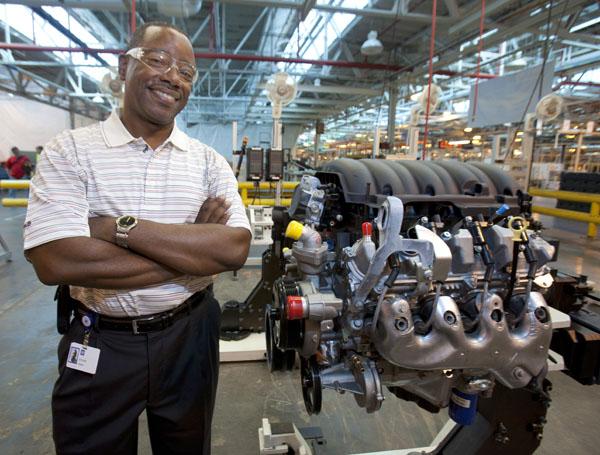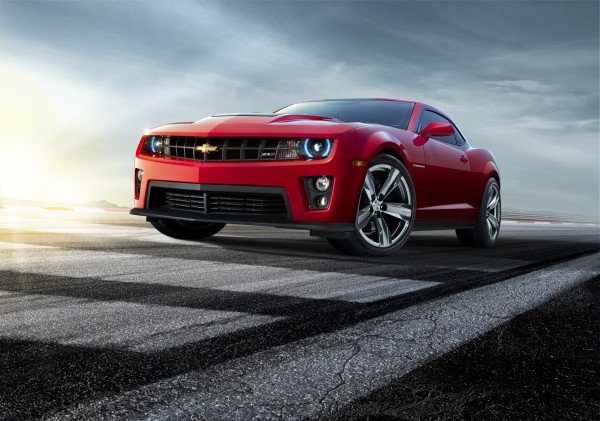VanDevere Chevrolet has been allocated 1 2013 Camaro ZL1. This means that we can build your dream car today! Call VanDevere Chevrolet at 330-867-3010 and order your very own Camaro ZL1 today! Hurry, these allocations are not made available often!
A Look at 5th Generation of Chevy Small Block V8
 Looking A Bit Closer At The new Small Block
Looking A Bit Closer At The new Small BlockJuly 16th, 2012
www.GMInsideNews.com
by: Alex Villani http://www.gminsidenews.com/forums/f70/first-look-fifth-generation-small-block-chevy-112242/ Last week, the Buffalo Business Journal did a small write up about the Tonawanda Engine Plant producing the next-generation V8 engines and even snapped a small shot of Steven Flinch, manager of the plant, standing next to one the brand new engines. From this angle, we can make out a few things that quickly jump out, as well as a few things that puzzle us.There are a few things on this engine that jump out at us here on GMI, namely those raised parts on the valve cover and the large pulley on the lower driver side. The raised parts are not all the same shape, but they could signal the rumored 3-valve head design that GM had shown in concept form several years at during SEMA. Either that, or it could be there to cover the direct fuel injectors, but that would be a rather stupid to place them under the valve cover.
Most likely that the injectors are hidden under what looks like to be a two-piece intake manifold and in this picture, the intake is wearing a sound-suppressing cover over the top. You can see the fuel rail connector poking out right above one of the raised parts of the valve cover (has a blue cap on it). We know that direct injection is going to show up in the Gen Vs, but this would be the first time the technology shows up in a overhead valve engine.
This looks to be a truck version, complete with a taller intake manifold to help develop more torque, just like the current truck engines have. The other bits of the engine look brand new, from the front water pump assembly to the shape of the engine’s cylinder heads. The large pulley on the bottom could be an oil pump, giving all the engines a dry sump system that would improve oil pressure as well as increase gas mileage.
You can even make out a small port sticking out right above the pump that would most likely go to some sort of reservoir mounted elsewhere under the hood. Right now, only the engines built at the Wixom Performance Build Center (LS7, LS9, and LS3) have dry-sump oiling systems which are used to make sure the engine maintains strong oil pressure through high-g turns.
The last oddity would be the holes in each of the exhaust manifold runners. This last time GM did this, it was part of an system that helped lower emissions levels in engines from the 80’s and 90’s but within a few years of the third generation small blocks, emission assist systems started to disappear as the engines started to burn cleaner and cleaner. Could this mean that the engines are not as clean burning as the current Gen IVs? Time will tell, but the engine looks as if all the rumors are true, and that this engine is all new, sharing very little with previous versions.
With the new trucks getting ready to debut in the next few months and the seventh generation Corvette most likely going to debut at Detroit in January, expect to hear more news and see more information about the Gen V engines as time goes on.

